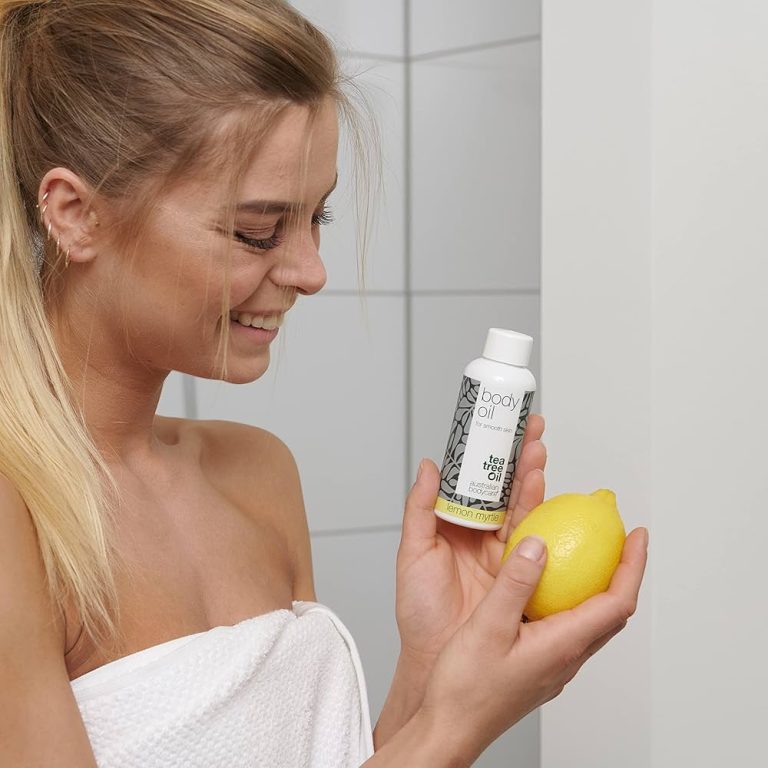
The Luxurious World of Scented Body Oil
Indulgence for the Skin and Senses
Scented body oils offer a luxurious experience. They nourish the skin deeply. Fragrant essences delight the senses. These versatile products enhance daily routines. From post-shower moisturizing to massage, body oils serve multiple purposes. The right scent can uplift mood or promote relaxation. Quality ingredients provide lasting hydration and glow. Users often find themselves transported by the aromatic blends. Scented body oil transform simple self-care into a sensory journey.
They bridge the gap between skincare and perfumery. Many people incorporate them into both morning and evening rituals. The oils leave skin feeling soft, supple, and delicately fragranced. This dual benefit makes them a popular choice for those seeking efficiency in their beauty routines. Additionally, the natural properties of many essential oils offer therapeutic benefits. Some blends can ease muscle tension or promote better sleep. Others might invigorate the senses and boost energy levels.
The variety of scents available ensures there’s an oil for every preference and need. From floral and fruity to woody and spicy, the options are vast. This allows users to customize their experience based on mood or occasion. The growing popularity of scented body oils reflects a broader trend towards holistic self-care. People increasingly seek products that nourish both body and mind. Scented oils fit perfectly into this ethos, offering a moment of luxury in everyday life.
The History and Evolution of Scented Oils
Scented oils boast a rich history spanning thousands of years. Ancient civilizations valued them highly. Egyptians used fragrant oils in religious ceremonies and burial rites. Cleopatra famously bathed in rose-scented milk. Greek athletes anointed themselves with scented oils before competitions. In India, Ayurvedic practices incorporated aromatic oils for healing. The Middle Ages saw advancements in distillation techniques. This led to more refined and complex scented oils.
During the Renaissance, exotic oils became symbols of wealth and status. Perfumers developed new blends, pushing the boundaries of fragrance creation. The Victorian era brought a resurgence in the popularity of floral scents. Ladies used delicate oil-based perfumes as part of their daily grooming. The 20th century saw the rise of synthetic fragrances. However, natural scented oils maintained a loyal following. In recent decades, there’s been a return to natural and organic formulations.
Consumers increasingly seek products with clean, recognizable ingredients. This trend has propelled scented body oils back into the spotlight. Modern formulations combine ancient wisdom with scientific advancements. They offer improved stability, absorption, and scent longevity. The global wellness movement has further boosted interest in aromatherapy and essential oils. Many people now view scented body oils as part of a holistic approach to well-being.
Choosing the Perfect Scented Oil
Selecting the ideal scented oil requires careful consideration. Several factors influence the choice. Skin type plays a crucial role in determining the best base oil. Dry skin benefits from richer oils like almond or avocado. Oily skin suits lighter options such as grapeseed or jojoba. Those with sensitive skin should opt for gentle, hypoallergenic formulations. The intended use of the oil also affects selection. Massage oils might prioritize slip and absorption. Body moisturizers focus on hydration and scent longevity. Hair oils need to nourish without weighing down strands.
Personal scent preferences guide fragrance selection. Floral scents like rose or jasmine offer romantic, feminine notes. Woody aromas such as sandalwood or cedar provide grounding, masculine qualities. Citrus oils energize and refresh. Herbal scents can calm and soothe. Many people choose different scents for various moods or occasions. A light, fresh scent might suit daytime use. Richer, more complex fragrances often work well for evenings. Seasonal preferences also influence choices. Light, airy scents feel appropriate for spring and summer.
Warm, spicy notes complement fall and winter. Some individuals prefer to coordinate their scented oil with their perfume. Others use it as a subtle alternative to traditional fragrances. The concentration of essential oils in the product matters. Higher concentrations offer stronger scents but may irritate sensitive skin. Milder formulations provide a more subtle fragrance experience. Price points vary widely in the scented oil market. Luxury brands often command premium prices. However, quality options exist at various price levels. Reading reviews and testing samples help inform decisions. Many stores offer testers, allowing customers to experience scents firsthand.
Application Techniques for Maximum Benefits
Proper application maximizes the benefits of scented body oil. The right technique enhances absorption and extends fragrance longevity. Start with clean, slightly damp skin. This helps lock in moisture and allows the oil to spread easily. Warm the oil between palms before applying. This activates the scent and improves absorption. Use gentle, upward strokes to massage the oil into the skin. This technique aids circulation and lymphatic drainage.
Pay extra attention to dry areas like elbows, knees, and feet. These spots often need additional moisture. For an all-over glow, mix a few drops of oil into body lotion. This creates a custom moisturizer with a subtle scent. When using scented oil on the face, proceed with caution. Some oils can clog pores or irritate sensitive facial skin. A patch test is especially important for facial application. To use scented oil in hair, focus on the ends. Avoid applying oil directly to the scalp unless treating specific issues. For a relaxing experience, add a few drops of oil to a warm bath.
The steam will diffuse the scent, creating an aromatic atmosphere. Some people enjoy using scented oils for meditation or yoga practices. Apply a small amount to pulse points before beginning the session. This enhances the sensory experience of these mindful activities. Layering different scented products can create a unique fragrance profile. Start with scented body wash, follow with matching oil, and finish with a complementary perfume. Reapplication throughout the day helps maintain the scent. Carry a small bottle for touch-ups when needed.
The Science of Scent and Well-being
Scents profoundly affect mood and well-being. This connection forms the basis of aromatherapy. The olfactory system links directly to the brain’s limbic system. This area processes emotions and memories. When inhaling a scent, molecules travel to the olfactory receptors. These receptors send signals to the brain, triggering various responses. Different scents can elicit specific physiological and psychological effects. Lavender, for example, promotes relaxation and better sleep.
Studies show it can lower heart rate and blood pressure. Citrus scents like lemon and orange boost energy and mood. They may increase the production of serotonin, a feel-good neurotransmitter. Peppermint improves focus and concentration. It can enhance cognitive performance in certain tasks. Rose oil may reduce anxiety and stress levels. It has a calming effect on the nervous system. Eucalyptus clears the airways and boosts immunity.
It’s often used to relieve cold and flu symptoms. Sandalwood grounds the mind and aids in meditation. It may help reduce stress and promote mental clarity. The effects of scents can be both immediate and long-lasting. A familiar smell can instantly transport someone to a specific memory or place. Regular use of certain scents can create positive associations over time. This principle is used in scent marketing by businesses. They create signature scents to enhance brand recognition and customer experience.
Users enjoy both the sensory pleasure and the mood-altering effects. Some scented oils are designed to address specific concerns. Sleep blends might include lavender, chamomile, and vetiver. Energizing formulas often feature citrus and mint oils. Stress-relief blends may combine frankincense, ylang-ylang, and bergamot. The effectiveness of aromatherapy varies among individuals. Personal preferences and past experiences influence scent perception.

Popular Scented Oil Ingredients and Their Benefits
Scented body oils combine various ingredients to create their unique formulations. Essential oils provide natural fragrances and therapeutic benefits. Carrier oils form the base, offering moisturizing and nourishing properties. Some popular essential oils include lavender, rose, and sandalwood. Lavender promotes relaxation and may improve sleep quality. Rose oil has mood-lifting properties and can balance skin moisture. Sandalwood offers grounding effects and may reduce anxiety. Citrus oils like lemon, orange, and grapefruit energize and refresh.
They can boost mood and increase alertness. Peppermint oil cools the skin and may relieve muscle tension. Tea tree oil provides antibacterial properties, beneficial for acne-prone skin. Eucalyptus clears the airways and can soothe sore muscles. Frankincense has anti-inflammatory properties and may reduce the appearance of scars. Ylang-ylang balances sebum production and has a calming effect. Bergamot uplifts mood and may help alleviate stress. Common carrier oils include jojoba, coconut, and argan. Jojoba closely resembles human sebum, making it suitable for all skin types.
Coconut oil deeply moisturizes and has antimicrobial properties. Argan oil is rich in vitamin E and fatty acids, promoting skin elasticity. Sweet almond oil absorbs easily and suits sensitive skin. Grapeseed oil is light and non-greasy, ideal for oily skin types. Avocado oil deeply nourishes and may help reduce signs of aging. Some formulations include botanical extracts for added benefits. Chamomile extract soothes irritated skin. Green tea extract provides antioxidants. Aloe vera extract cools and hydrates the skin. Certain products incorporate vitamins and minerals.
DIY Scented Body Oil Recipes
Creating custom scented body oil can be a rewarding experience. It allows for personalized fragrance combinations and ingredient control. Starting with a base carrier oil is essential. Jojoba or sweet almond oil work well for most skin types. For a relaxing blend, combine lavender and vanilla essential oils. This creates a calming scent perfect for bedtime routines. An energizing citrus and mint combination suits morning use. Mix sweet orange and peppermint oils for an invigorating effect. For a romantic scent, blend rose and jasmine essential oils.
This floral combination offers a luxurious, feminine fragrance. A grounding sandalwood and patchouli mix provides earthy warmth. It’s ideal for meditation or yoga practices. To address dry skin, add a few drops of vitamin E oil. This acts as a natural preservative and boosts moisturizing properties. For sensitive skin, chamomile or calendula-infused oil can be soothing. These gentle ingredients help calm irritation and redness. Creating a muscle-soothing blend involves eucalyptus and rosemary oils. This combination may help alleviate tension and minor aches.
A hair-nourishing oil might include rosemary and cedarwood. These oils are believed to promote healthy hair growth. For a tropical scent, combine coconut and lime essential oils. This blend evokes memories of beach vacations. An immune-boosting formula could include tea tree and lemon oils. These have natural antibacterial and antiviral properties. When making DIY oils, proper dilution is crucial. Essential oils are potent and can irritate skin if used undiluted. A general rule is to use 15-20 drops of essential oil per ounce of carrier oil.

The Future of Scented Body Oil Technology
Scented body oil technology continues to advance rapidly. Innovations focus on enhancing efficacy, sustainability, and user experience. Microencapsulation techniques allow for time-released fragrance. This technology prolongs the scent experience throughout the day. Smart oils that adapt to individual body chemistry are in development. These would create truly personalized fragrances for each user. Biotechnology produces sustainable fragrance ingredients. This reduces reliance on natural resource harvesting and ensures consistent quality.
Multifunctional oils offer various benefits in one product. They might combine fragrance, skincare, and sun protection properties. Nanotechnology improves the delivery of active ingredients. It allows for deeper penetration and more effective results. Some brands explore color-changing oils activated by body heat. This adds a fun, interactive element to the application process. Eco-friendly packaging innovations reduce environmental impact. Biodegradable or refillable containers are becoming more common.
Augmented reality apps help consumers select the right scented oil. They offer virtual try-on experiences for different fragrances. Artificial intelligence assists in creating new scent combinations. It analyzes preferences and predicts successful blends. Customization services allow users to create bespoke scented oils. These services use data to formulate personalized products. Probiotic-infused oils support the skin’s microbiome. They promote overall skin health beyond basic moisturization. Mood-enhancing formulations based on neuroscience research emerge.
These target specific emotional states through carefully crafted scents. Texture innovations provide unique sensory experiences. Oils that transform into different consistencies upon application are in development. Collaborations between beauty and tech companies drive innovation. This cross-industry approach leads to novel product concepts. As technology progresses, scented oils will likely become more sophisticated. They’ll offer enhanced benefits, sustainability, and personalization options. The future of scented body oils promises exciting advancements in beauty and wellness.



